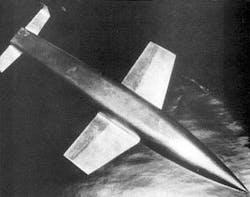Don’t believe the hype: All-electric, autonomous aircraft a long shot, and supersonic misses the mark, readers say
HOWARD’S TOWER BLOG. Aerospace professionals – industry veterans, engineers fresh out of college, and everyone in between – kindly offered their feedback on a recent Howard’s Tower blog. In that blog, I discussed Boeing doubling down on all-electric and autonomous aircraft, as company officials invest in and work to acquire innovators in both areas. (Take a look by clicking here: http://www.intelligent-aerospace.com/articles/2017/10/boeing-particularly-well-poised-to-lead-all-electric-autonomous-aircraft-market.html)
Welcome feedback included lots of opinions, educated guesses, technical evidence both in support of and refuting progress in autonomy and power electronics, and more. All of it constitutes further proof that readers of Intelligent Aerospace are among the most passionate, not to mention well informed, knowledgeable, outgoing, personable, dedicated, and maybe even as opinionated as I. (Love it!) Keep proving me right on those points and continue the conversation here, in social media, or by e-mail.
I cherry-picked and am happy to share with you a Letter to the Editor that I found to be particularly insightful, thought-provoking and candid. In fact, we corresponded because I felt compelled to pick his brain about supersonic transport aircraft, in which Boeing also has expressed interest and invested. It follows:
-------
Don't be taken in by the marketing hype. No one is going to want an autonomous airplane or car.
Airplanes are much easier than cars to make autonomous because they already work on a central air traffic controller concept, but can you imagine anyone trusting Window OS with their lives?
Even if Microsoft has nothing to do with the software, the point is all programming is full of glitches. That is because an infinite number of things can happen, and they can't always be anticipated.
People don't realize how difficult it is to do computer vision. Humans do it easily because we have over a hundred billion parallel processors.
You can get around that by networking all vehicles so they broadcast where they are and what they intend to do, but then all human pilots and drivers would need to be banned, and that is never going to happen.
The cost of all the additional servers and towers would be trillions, as well.
And forget electric planes. No matter how long they can stretch battery capacity to, it will never be enough to be reliable in an airplane, where you might have to just circle until it is your turn.
As for supersonic aircraft, I think it that is missing the boat. Hypersonic is much better, because the idea is to get above the atmosphere, and then skip around the globe by bouncing off the atmosphere. That may sound a little weird, but it is not really.
Existing flights are almost out of the atmosphere already, which is why the cabin has to be pressurized. The only thing preventing slight more altitude is lack of engine oxidizer, which is not hard to deal with.
And the point is once you can skip, fuel consumption drops to near zero, and range almost infinite.
Look up the early research done by the Germans in WWII, known as Eugene Sanger's Silbervogel (silver bird).
Public Domain, Link
{...
The design was a significant one, as it incorporated new rocket technology, and the principle of the lifting body, foreshadowing future development of winged spacecraft such as the X-20 Dyna-Soar of the 1960s and the Space Shuttle of the 1970s.[1] In the end, it was considered too complex and expensive to produce. The design never went beyond mock up test.
The Silbervogel was intended to fly long distances in a series of short hops. The aircraft was to have begun its mission propelled along a 3 km (2 mi) long rail track by a large rocket-powered sled to about 800 km/h (500 mph). Once airborne, it was to fire its own rocket engine and continue to climb to an altitude of 145 km (90 mi), at which point it would be travelling at some 5,000 km/h (3,100 mph). It would then gradually descend into the stratosphere, where the increasing air density would generate liftagainst the flat underside of the aircraft, eventually causing it to "bounce" and gain altitude again, where this pattern would be repeated. Because of aerodynamic drag, each bounce would be shallower than the preceding one, but it was still calculated that the Silbervogel would be able to cross the Atlantic, deliver a 4,000 kg (8,800 lb) bomb to the continental United States, and then continue its flight to a landing site somewhere in the Empire of Japan–held Pacific, a total journey of 19,000 to 24,000 km (12,000 to 15,000 mi).
Postwar analysis of the Silbervogel design involving a mathematical control analysis unearthed a computational error and it turned out that the heat flow during the initial atmospheric re-entry would have been far higher than originally calculated by Sänger and Bredt; if the Silbervogel had been constructed according to their flawed calculations the craft would have been destroyed during re-entry. The problem could have been solved by augmenting the heat shield, but this would have reduced the craft's already small payload capacity.[2]
...}
Kirk Augustin
[email protected]
-------
Many thanks to Mr. Augustin, and all those who took the time to write. Keep it coming! What aerospace innovations are you most excited to see come to fruition? How are you pushing the aerospace technology envelope?
Search the Aerospace & Defense Buyer's Guide
The go-to resource for Intelligent Aerospace technology news & information:
Covering key topics
Across all market segments
Subscribe to the free Intelligent Inbox e-newsletter
Subscribe to receive all the latest aerospace technology news & information, delivered directly to your e-mail inbox twice a week (Tuesdays and Thursdays). Sign upfor your free subscription to the Intelligent Inbox e-newsletter at http://www.intelligent-aerospace.com/subscribe.html.
Connect on social media
Keep pace with aerospace innovation and opportunities via your favorite social media channels. Connect with Intelligent Aerospace on Twitter (@IntelligentAero), LinkedIn,Google+, and Instagram.



